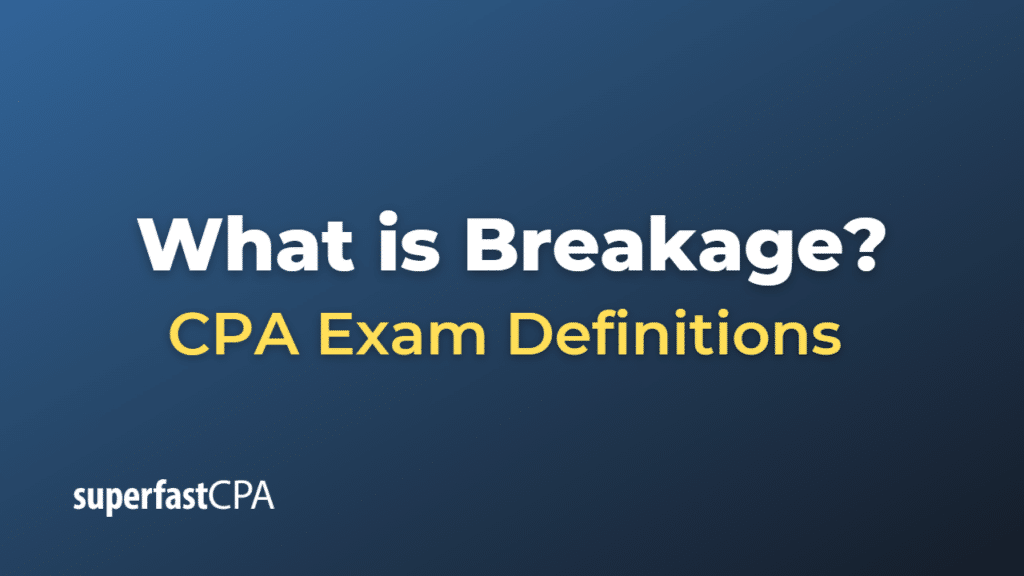Breakage
Breakage, in the context of accounting and finance, refers to unclaimed or unused amounts from certain financial instruments, customer incentives, or promotional offers. It usually occurs when customers do not fully redeem the value of gift cards, vouchers, loyalty reward points, or other such instruments. Since these amounts are never claimed, they ultimately represent additional revenue for the issuing company.
Companies often estimate breakage based on historical data, redemption patterns, and expiration dates of the financial instruments. Once the breakage is reasonably estimated, it can be recognized as revenue in the company’s financial statements.
It is essential for businesses to account for breakage accurately and conservatively to avoid overestimating revenue and violating accounting principles. In the United States, breakage accounting is generally guided by the Financial Accounting Standards Board (FASB) Accounting Standards Update (ASU) 2016-04, which provides a framework for the recognition of breakage revenue.
For example, a retail store may issue gift cards to its customers, and not all customers redeem the full value of these gift cards. The remaining unclaimed balance represents breakage, which the store may eventually recognize as revenue, depending on its estimation and accounting policies.
Example of Breakage
Let’s consider a fictional coffee shop called “Coffee Haven” that sells gift cards to customers. Coffee Haven wants to account for the breakage related to the unused portion of these gift cards.
Here’s the available information:
- Total gift card sales during the year: $10,000
- Gift card redemptions during the year: $8,200
- Historical breakage rate based on past data and redemption patterns: 15%
First, we need to calculate the expected breakage amount:
Expected Breakage = Total Gift Card Sales x Historical Breakage Rate
Expected Breakage = $10,000 x 0.15
Expected Breakage = $1,500
Next, we need to determine the actual breakage amount. We can do this by comparing the redemptions to the total gift card sales:
Actual Breakage = Total Gift Card Sales – Gift Card Redemptions
Actual Breakage = $10,000 – $8,200
Actual Breakage = $1,800
Now, we need to determine the breakage that can be recognized as revenue. Since Coffee Haven cannot recognize more breakage than expected, the recognized breakage will be the lesser of the actual and expected breakage:
Recognized Breakage = Minimum (Actual Breakage, Expected Breakage)
Recognized Breakage = Minimum ($1,800, $1,500)
Recognized Breakage = $1,500
Coffee Haven can recognize $1,500 as breakage revenue related to its gift card sales. This example illustrates how companies can account for breakage using historical data, redemption patterns, and conservative estimation to recognize revenue in compliance with accounting standards.













